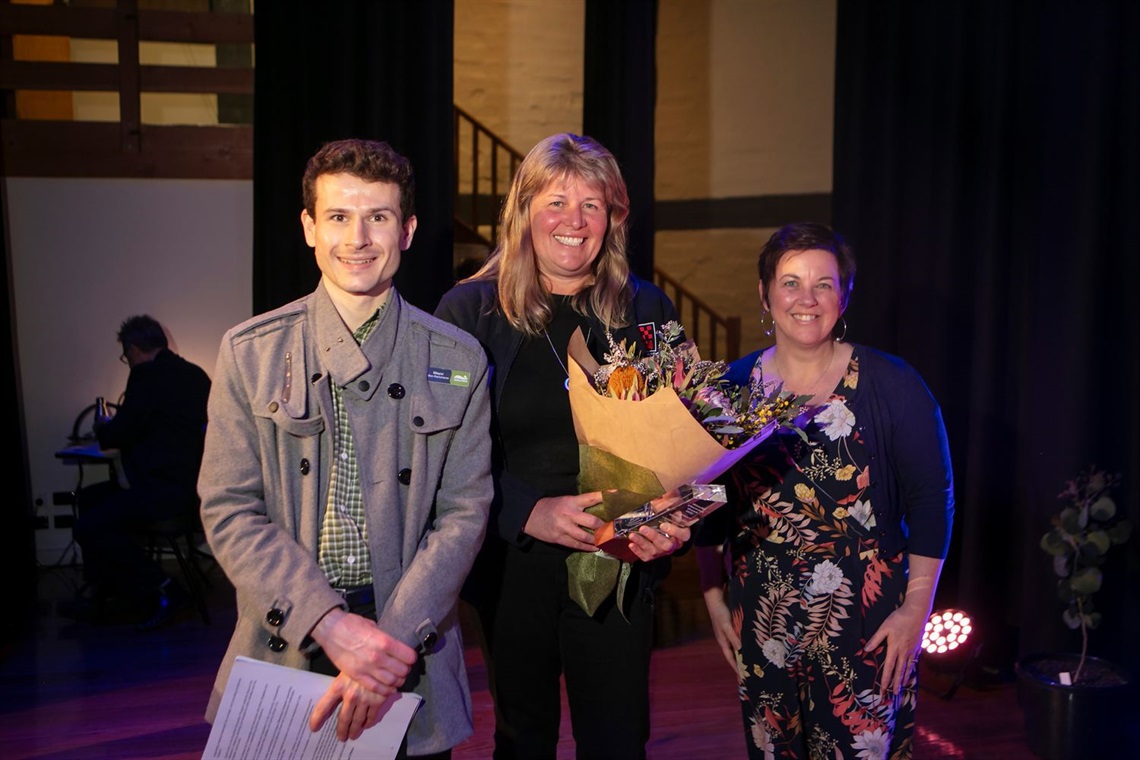A ground-nesting bee family – commonly known as miner bees – could play a heightened role in rebuilding black cherry populations in Pennsylvania and beyond, according to Penn State entomologists who investigated pollinators’ contributions to the valuable hardwood species.
Pennsylvania’s black cherry trees are among the finest in the country, noted former graduate student Rachel McLaughlin, who led the study under the direction of Kelli Hoover and Christina Grozinger, professors of entomology in the College of Agricultural Sciences.
“Black cherry historically has been one of the more premier commercial hardwoods,” said McLaughlin, who earned her master’s degree in entomology in 2021. “It is used to make high-quality furniture, cabinets, paneling, flooring, musical instruments and more. And nearly 30% of the nation’s black cherry volume is in Pennsylvania.”
Yet, fewer seedlings and saplings have been reported growing in the last 20 years. McLaughlin pointed to statistics from the U.S. Department of Agriculture Forest Service that show a 60% decline in established black cherry seedling densities across the entire Allegheny Plateau, stretching from western and central New York, down through Pennsylvania, into West Virginia and over into Ohio.
Changing weather, soilborne pathogens and insect pests are likely contributing to the decline. Given that black cherry is insect-pollinated and unable to produce viable seed from self-pollination, a reduction in seed crops could be due to a pollination deficit, McLaughlin explained.
“Identifying the pollinators and factors that influence pollinator abundance and fidelity is critical for supporting and enhancing seed production for this valuable timber species,” she said.
Additionally, because most black cherry seeds germinate near the parent tree, their success depends on the number and distribution of seed-producing trees in the overstory and insect pollination.
“Since the key pollinators are unknown, it is difficult to develop management or conservation strategies to support and enhance viable black cherry seed production,” Hoover said.
To identify the pollinators most responsible for transferring pollen needed for seed production, the team conducted a two-year study in developed, semi-developed and forested areas in Centre County and in the Allegheny National Forest near Kane. Methods involved visual observations, collecting insects that visited open flowers, testing seed viability, and examining the ecosystem’s biotic (living) and abiotic (nonliving) factors.
“This design allowed us to evaluate whether the pollinator community visiting black cherry was consistent across land-use types, evaluate different sampling approaches and conduct observations to assess floral fidelity of insect visitors,” said McLaughlin.
While flies, beetles and halictid bees – also called sweat bees – were frequent visitors to black cherry flowers during the study, the team discovered that the most important pollinator across the various landscapes was the andrenid – or miner bee – a solitary, ground-nesting bee.
The researchers, who recently reported their results in Environmental Entomology, found that miner bees represented 24% of all interactions with black cherry flowers and carried an average of 347 times more black cherry pollen than flies and 18 times more than halictid bees, thereby improving cross-pollination of other black cherry trees.
Another key finding was that the proportion of andrenids was significantly related to the proportion of viable collected seeds at both the Centre County and Allegheny Plateau sites. In other words, the more miner bees there were, the greater the chance for those seeds to grow.
“Pennsylvania is home to more than 400 species of bees, but most people are familiar with only a small number of them,” said Grozinger, Publius Vergilius Maro professor of entomology and director of the Center for Pollinator Research at Penn State. “Andrenid bees are very important for springtime pollination of flowering trees, including apples. However, we do not know very much about how to manage our landscapes to support andrenid bee species.”
Grozinger anticipates this lack of understanding will lead to future studies and action. “Most people understand that pollinators are essential for the production of food crops,” she said. “However, nearly 90% of flowering plant species use pollinators to set seed and produce fruit, so they are very important for nonagricultural systems as well. We hope our results will motivate interest in conserving pollinator populations in forest ecosystems and other landscapes.”
Hoover encouraged land managers to take steps to attract and support miner bees through practices such as thinning or clearing trees at high density from sunny, well-drained areas.
“Though there is much to learn about the complex problem of black cherry regeneration, we now know we have a powerful ally in andrenids,” she said. “We need to take measures to safeguard their habitats.”
Others from Penn State contributing to the study were Joseph Keller, postdoctoral scholar, Elizabeth Wagner, laboratory/field technician, David Biddinger, tree-fruit research entomologist, David Long, research technologist, Laura Leites, associate research professor of quantitative forest ecology, Harland Patch, assistant research professor of entomology, and Michael Skvarla, assistant research professor of arthropod identification.
Also on the research team were Robert Long, supervisory research plant pathologist, Andrea Hille, forest silviculturist, and Susan Stout, research silviculturist, all from the U.S. Department of Agriculture’s Forest Service.
The Pennsylvania Department of Agriculture Hardwoods Development Council, the state Department of Conservation and Natural Resources Bureau of Forestry, the U.S. Department of Agriculture’s National Institute of Food and Agriculture, Penn State’s Graduate Training Program in Integrative Pollinator Ecology, and Wyman’s of Maine supported this work.







